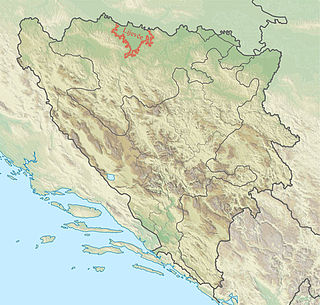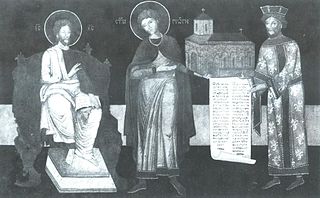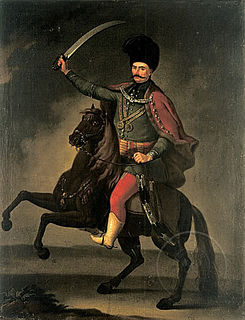
Rascians was term which was used most frequently in the Kingdom of Hungary, and also in the Habsburg Monarchy. The term was derived from the Latinized name for the central Serbian region of Raška. In medieval and early modern Western sources, exonym Rascia was often used as a designation for Serbian lands in general, and consequently the term Rasciani became one of the most common designations for Serbs. Because of the increasing migratory concentration of Serbs in the southern Pannonian Plain, since the late 15th century, those regions also became referred to as Rascia, since they were largely inhabited by Rasciani (Rascians). Among those regions, term Rascia (Raška) was most frequently used for territories spanning from western Banat to central Slavonia, including the regions of Syrmia, Bačka, and southern Baranja. From the 16th to the 18th century, those regions were contested between the Ottoman Empire and the Habsburg Monarchy, and today they belong to several modern countries.

Lijevče, also the Lijevče field, is a small geographical region in northern Bosnia and Herzegovina; a plain situated between the rivers Sava and Vrbas, and Mount Kozara. It includes settlements part of Gradiška, Srbac and Laktaši, in the Banja Luka Region of the Republika Srpska entity. It is part of the wider Bosanska Krajina historical region.

The Church of the Virgin Hodegetria was a 14th-century Serbian Orthodox church in Mušutište, near Suva Reka, Kosovo,. The church was destroyed by Kosovar Albanian forces during the destruction of the Serbian part of Mušutište, after the end of the Kosovo war in 1999.

Mijaks are an ethnographic group of Macedonians who live in the Lower Reka region which is also known as Mijačija, along the Radika river, in western North Macedonia, numbering 30,000-60,000 people. The Mijaks practise predominantly animal husbandry, and are known for their ecclesiastical architecture, woodworking, iconography, and other rich traditions, as well as their characteristic Galičnik dialect of the Macedonian language.
Baldovin was a Serbian knez (duke) and kaznac that served King Stefan Uroš III. He held the province around Vranje.
Lower Kolašin is a historical region in the present-day municipality of Bijelo Polje in northern Montenegro, towards Serbia. It is situated in the picturesque Vraneš valley formed around the river Ljuboviđa. The most important local populated centers are Tomaševo and Pavino Polje.

Radič was a Serbian nobleman that had the title of Grand Čelnik, the highest dignitary after the Serbian monarch. He began his service under Prince, later Despot, Stefan Lazarević as čelnik, then was elevated to Grand Čelnik during the rule of Despot Đurađ Branković. He was very wealthy, and held the silver mines in Novo Brdo of the Serbian Despotate. Radič founded and renovated several churches and monasteries which still exist, including the notable Vraćevšnica and Kastamonitou. He took monastic vows and became a monk in Kastamonitou where he spent his last years.
Antonije Znorić was a military officer (colonel) of the Habsburg army and the commander of the Serbian Militia during the Great Turkish War.
Jovan Grković, nicknamed Gapon (Гапон) was a former Serbian Orthodox monk who joined the Serb guerrilla (chetniks) in the Macedonian Struggle (1902–1912).
Avram Miletić was a merchant and writer of epic folk songs who is best known for writing the earliest collection of urban lyric poetry in Serbian language between 1778 and 1781.
Gradislav Vojšić was a Serbian nobleman who served the Serbian Kings Stefan Uroš II Milutin and Stefan Uroš III. He was the first known čelnik of the Serbian court, in the nearest circle of the King, mentioned serving the first time in 1284 and the second time in 1327. The čelnik was entrusted with the security of Church property from the nobility, and appeared in the role of a judge or executor of the King's decisions, in disputes between the Church and the nobility.
General Vuča or General Vuka is a popular legendary hero of Serbian epic poetry who is depicted as enemy of Kraljević Marko.

Arsenije Sečujac was a Habsburg general who earned the rank of major general at the very end of his military career and was awarded the Knight's Cross of the Military Order of Maria Theresa, the highest Monarchy decoration, in 1762.
Tripo Smeća was a Venetian historian and writer from Perast, Bay of Kotor. He collected old manuscripts and transcribed popular poetry.
Grdan was the vojvoda (duke) of the Nikšić nahija, part of the Sanjak of Herzegovina, who led several uprisings against the Ottomans in between 1596 and 1612, alongside Serbian Patriarch Jovan Kantul.
Damjan Ljubibratić, known as Damjan the Serb was a Serbian Orthodox monk and diplomat, the secretary of Patriarch Jovan Kantul.

The Serb uprising of 1596–1597, also known as the Herzegovina uprising of 1596–1597, was a rebellion organized by Serbian Patriarch Jovan Kantul and led by Grdan, the vojvoda ("duke") of Nikšić against the Ottomans in the Sanjak of Herzegovina and Montenegro Vilayet, during the Long Turkish War (1593–1606). The uprising broke out in the aftermath of the failed Banat Uprising in 1594 and the burning of Saint Sava's relics on April 27, 1595; it included the tribes of Bjelopavlići, Drobnjaci, Nikšić, and Piva. The rebels, defeated at the field of Gacko in 1597, were forced to capitulate due to a lack of foreign support.

The Mrkšina crkva printing house was a printing house established in 1562 in the Monastery of Mrkšina Crkva in village Kosjerić in Ottoman Serbia. This printing house was operational until 1566 and printed two srbulje books, The Four Gospels (Четворојеванђеље) in 1562 and The Flower Triod in 1566. In 1567 the Ottomans destroyed the church and its printing house.

Bogić Vučković Stratimirović was a rebel leader in the Sanjak of Herzegovina who organized an uprising in 1737, during the Austro-Russian–Turkish War (1735–39). He was from the Trebinje hinterland, in Herzegovina, the son of Vučko Petrović and grandson of Petar Stratimirović. Early on, he moved to the Kingdom of Serbia (1718–39). He is mentioned in documents as a merchant from Kragujevac. He bought an attestation from the Republic of Ragusa that he descended from Stracimir Balšić, the Lord of Zeta, then appeared in autumn 1737 at the Habsburg deputy commander's office in Sremski Karlovci, with Aleksa Milišević, presenting themselves as nobility and Vučković stressed that he had readied the Montenegrin peoples to help the Austrian Emperor. Vučković and his brothers organized an uprising in Herzegovina in 1737 during Austrian-Turkish conflicts in the Balkans, at the same time helping the Austrians. After the Capture of Belgrade (1739), for their efforts, he and his brothers were awarded Austrian noble titles and granted the village of Kulpin which they settled. They adopted the coat of arms of the medieval Kosača.
The Tronoša chronicle is a Serbian chronicle dating to 1526, transcribed by Orthodox hieromonk Josif Tronošac (Троношац) in 1791 at the Tronoša monastery near Loznica, in western Serbia. The Tronoša manuscript is the oldest survived copy, of which there are several transcriptions, one of them transcribed by Serafim. A copy is held at the monastery, while the original manuscript by Josif is held in Vienna.








